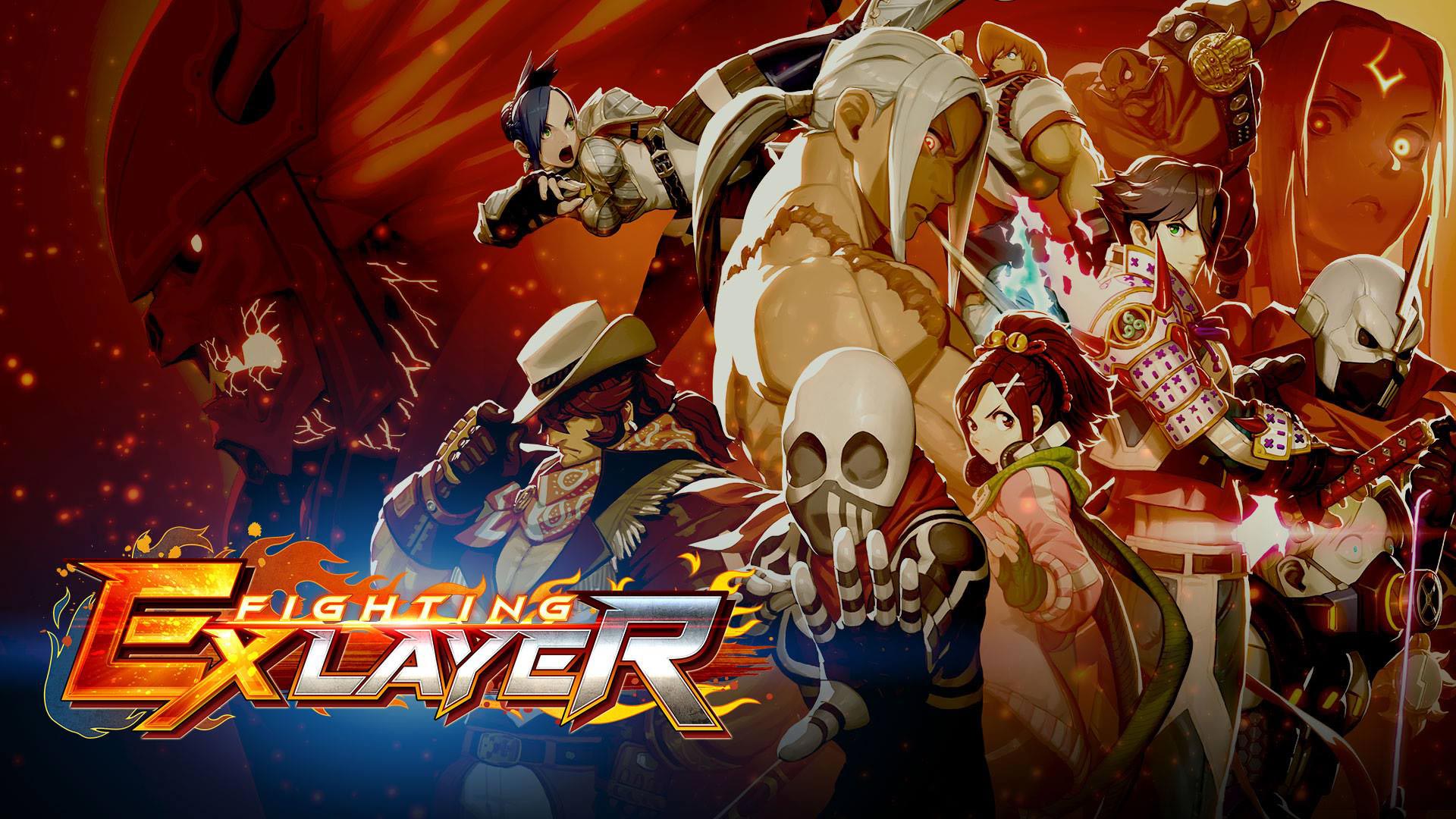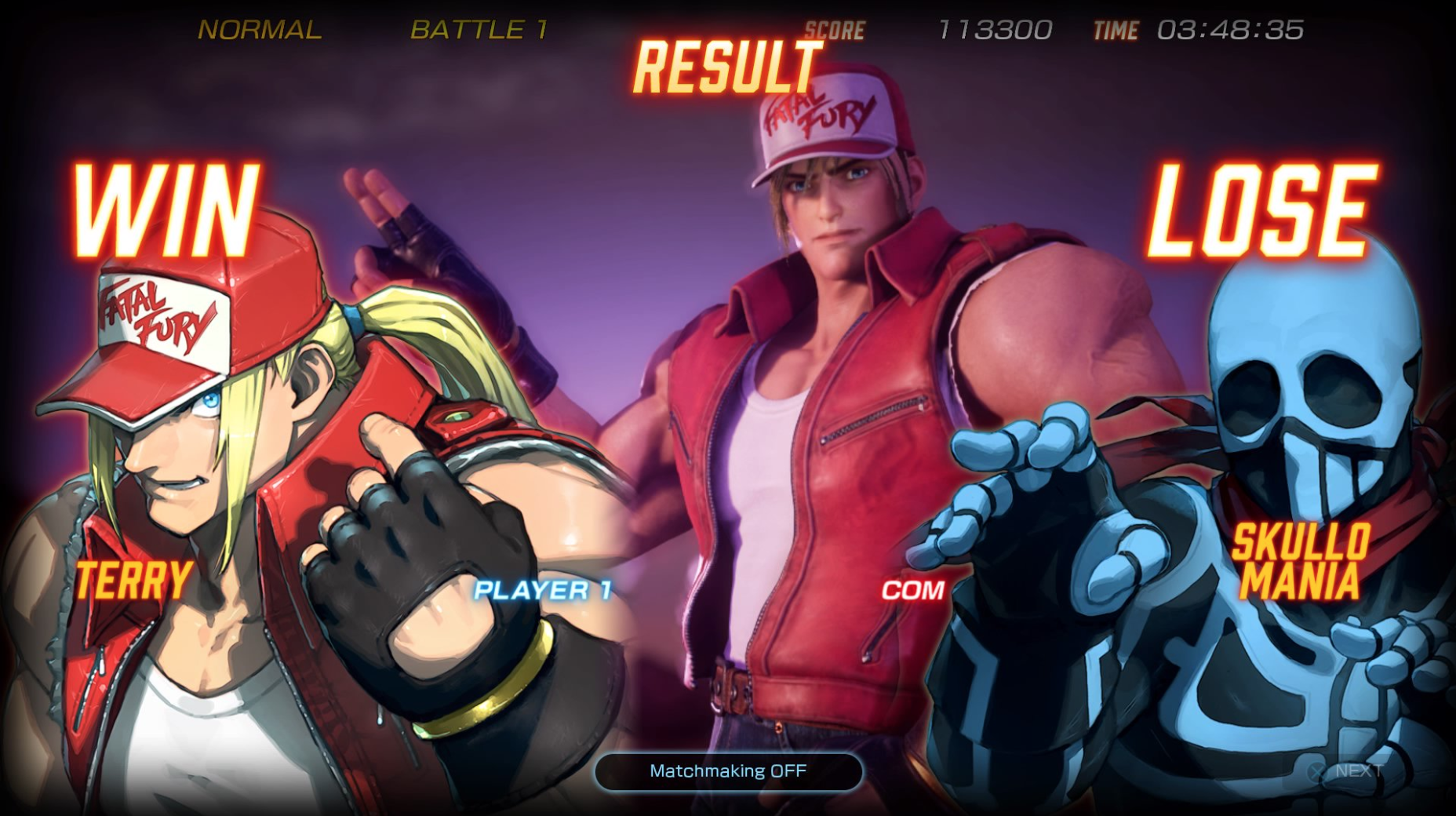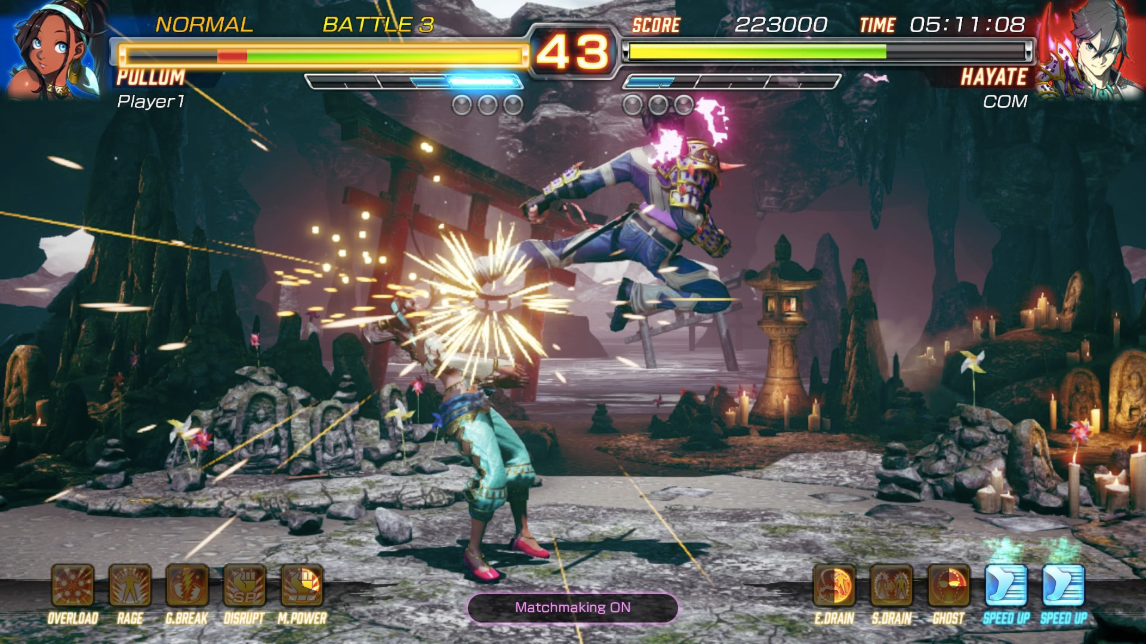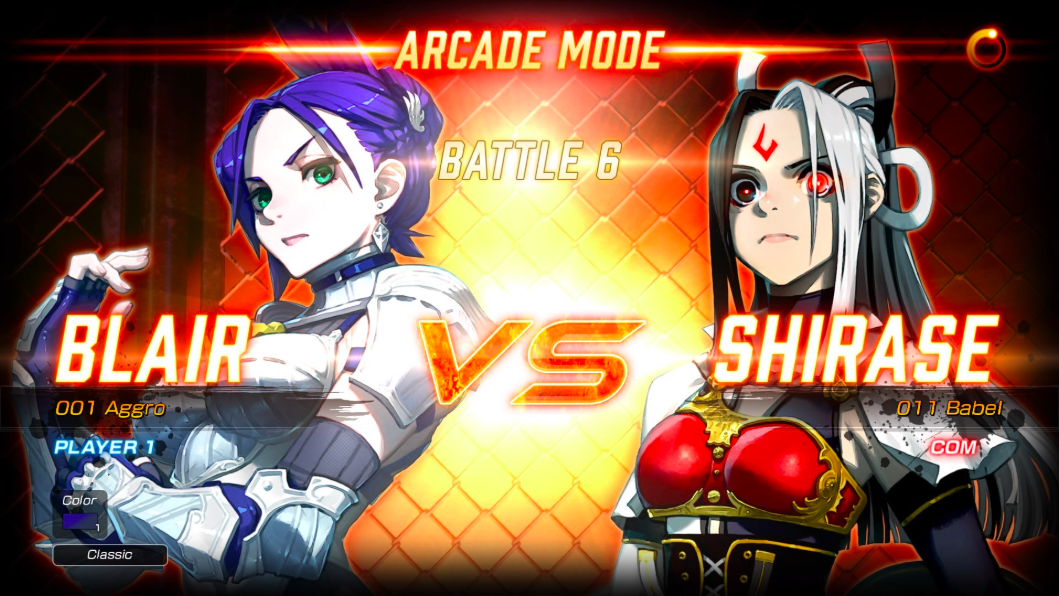Fighting EX Layer review
I’m a huge fan of the SFEX games—Street Fighter EX Plus α on PS1, in particular—so I’d been anxiously awaiting the release of Fighting EX Layer since it first popped onto our radar in the most peculiar fashion. The characters Arika introduced in their 1997 game were excellent; a diverse and colorful mix of traditional martial artists and street fighters, with an amateur superhero and a straight-up demon thrown in for good measure. Even when compared with the iconic Street Fighter cast side by side, Airka’s characters were distinctively, legitimately cool, and fun to play from the start.
These days I feel like those original EX fighters are bonafide classics, and—if I dare to say it—are superior to character designs Capcom has produced from SFIV onward. But while the designs were stellar in the late 90’s, how well would these fighters translate into a modern fighting game?
For a bit of background first, the path to us getting an EX revival has been a strange ride. The game’s development has been quite open to the public, keeping the Fighting Game Community more or less informed from the start. I say “more or less” because our first view of it appeared to be a gag.
The public’s first glimpse of the title was an “April Fools” video released in 2017, which showed footage of Kairi, Hokuto, and Garuda (from the original SFEX) fighting each other in full HD visuals rendered in Unreal Engine 4. As we would learn later, this was actually less of a prank and more of a test of market receptiveness. After an overwhelmingly positive reaction, Arika was assured that their new prototype could be a viable game product.
After the April Fools video, the game was simply referred to as “The Mysterious Fighting Game” for a time, while director Akira Nishitani and company considered the final title. More EX characters were announced before the game was officially titled “Fighting EX Layer”—a name that combines the titles of the SFEX series and Fighting Layer: a lesser known arcade game Arika made in 1998, published by Namco. (Blair Dame and Allen Snider, characters originating in SFEX, both appeared in Fighting Layer, thereby connecting the two series.)
After a year of hyped anticipation by the EX faithful (myself very much included), Fighting EX Layer was released as a digital PSN game on June 28th, 2018. The standard edition of the game had 13 playable characters (including old-school Hokuto, who basically got replaced by her “evil” version, Shirase) and 15 Gougi decks. (More on Gougi in a minute.) There was also a cheaper “Light Version” of the game, which included 12 characters (no Hokuto) and 5 Gougi decks. I personally went for the standard edition because I wanted to pay Arika full price for the game.
Overall FEXL was incredibly barebones at launch. I mean, it remains an underdog indie title today, not a fully-featured big budget production, but it was even more spartan in the beginning. It didn’t even have a single-player Arcade Mode initially, so you could either play Versus online or offline, do Training, or play through short combo trials in Expert Mode. All fighters had only two default colors available, so if you wanted more palette options, you’d have to spend $6 on a Color Set as DLC. (Alternate colors are still a DLC add-on today.)
A July 2018 update added an Arcade Mode, and then on Sept 5th, another free update added a couple new stages and two more playable characters: Pullum Purna and Vulcano Rosso. Fast-forward to March 2019 and Arika released another update, this time adding a new stage and two more fighters to the roster. Sharon, a pistol wielding fighter from SFEX2, became available for free, while Terry Bogard, SNK’s iconic fighter from Fatal Fury and King of Fighters, debuted as a paid DLC guest character ($5).
At this point, Fighting EX Layer has all the characters you know and love from SFEX. Cracker Jack? Check. Darun Mister? Check. Skullo-muthaf*ckin-mania? Hell yeah! Kairi, Allen, Pullm, D.Dark—the gang is all here! And they look shiny and new, with the high-detail renditions of each character basically match exactly how you remember them. Even weapon wielding fighters from SFEX2 who I am less familiar with have returned, like Hayate, Sanane, and Sharon. (Not to mention Area, who will be added to the roster eventually).
Ok, so all your old friends are here, but how does it play? Pretty good, actually! Just like the EX games of old, FEXL is highly accessible, super easy to pick up and play. Skullo, Darun, Blair—everyone plays more or less just as you’d expect them to. And damn, cancelling one super combo into another is the still dopest shit ever! If anything, most super combos feel a little too easy to pull off in FEXL, as I find myself doing them on accident all of the time.
Despite the cast of fighters being quite diverse, there is an overall consistency to everyone’s normal attacks and move inputs. Regardless of what character you’re using, pressing MP+MK will always do special attack (their old “guard break” moves) and inputing LP>MP>HP or LK>MK>HK will usually produce a chain combo. This consistency makes it easy to go from playing one fighter to another, which is greatly beneficial for a game with a roster this strong.
I really don’t get how a player can stick with using just one main fighter here, since each character brings something uniquely compelling to the table. Compared to a game like Tekken—where a handful of characters are awesome, but over half of them are silly, over the top, or just plain dumb—FEXL’s cast demonstrates an impressive balance of appeal. They certainly have made some changes to these fighters from earlier iterations though. Kairi, for instance, resembles his increasingly demonic/corrupted form seen in SFEX2&3 more than his original EX design. (Which is a bummer in my opinion, because original EX Kairi was my absolute favorite.)
Arika (and Akira Nishitani specifically, I suspect) are masters of making each hit feel satisfying when it connects. This combined with the character designs is, I believe, what makes Arika’s fighting games so special. The exaggerated impacts can go a bit too far at times though, making the pauses in between hits of certain moves last just a little too long. Take Blair’s shoot kick: I’m consistently surprised that it combos because the pauses between hits feel so long.
In terms of audio and visuals, FEXL makes good use of the Unreal Engine. Sure, nothing here looks technically stellar—especially compared to other modern fighting games—but it is a quantum leap ahead of 2000’s SFEX3 (PS2). The high-detail character renders generally look good both in stills and in motion, as the updated character designs are well-realized in the new engine. They almost look too good at times though; too detailed, too smooth, too glossy. With clear, up-close views of the characters models, it starts to border on Uncanny Valley territory. For one thing, none of these characters ever seem to blink. It rains in one stage and you can see the fighters getting visibly wet as raindrops fall on them, which is a nice touch, but completely unnecessary.
Speaking of stages, the 3D backgrounds range from just fine to excellent. The gameplay here is 2D of course, so Arika didn’t need to craft environments with full 360 degree views. And yet FEXL features eight stages which each have daytime and nighttime versions, plus the obligatory title-grid Training Stage. There’s a Japanese castle, a European-style castle, a vaguely New York-like city street, a dank cave, the arid dessert, the deck of a cruise ship, a badass rail yard/freight train stage (my personal favorite), and a weird ethereal field surrounded by serpents that appears to be a shrine to Suijin, the Shinto god of water. Each arena makes for fitting grounds to stage a martial arts showdown…which makes it more regrettable that Kumite (survival mode) gets relegated to Training and its lame grid background.
In the music department, Akira delivers hard rocking tunes to reenforce the game’s old school vibe. Some of menu themes and fanfares seem to subtly call back to previous EX games, though the overall style here is more electric guitar than EX Plus α’s relaxing jazz fusion. (Which to this day is still most bizarre video game score that has somehow managed to be perfect and timeless.) While it’s different than original game, I think the music here succeeds in standing on its own.
There is a distinct lack of options in FEXL that can be hard to ignore. For example, there is no way to disable the time-limit, or change it whatsoever—even in offline Versus mode! There is no option to adjust damage, and no way to even change the number of rounds. Like it or not, the timer is always 60 seconds and every match is best 3 out of 5.
The game’s biggest omission though—and the thing I keep complaining about with each new fighting game—is that there is no way to map multiple punches or kicks onto a single button. No PUNCHx3 or KICKx3 buttons for you. As a gamepad player, I find this omission in any six-button fighting game to be extremely vexing and downright unforgivable. The developers must realize that not every player is using an arcade stick, right? Especially if you primarily play Vulcano Rosso or Hayate (whose counterattack moves require multiple punches or kicks), this oversight is infuriating.
One of the few options that is included in FEXL is a mysterious “Easy Combos” option in the System settings. I didn’t know what this was until I read the game manual, but it’s apparently an option where the game will do an auto-combo if you dash in and mash buttons, starting your attack with LP or LK. If you have the meter for it, an Easy Combo will always cancel into a super combo too. This seems like an option for pure beginners only, yet it’s enabled by default for some reason. (I recommend turning it off.)
Gougi
The new element they’ve added to FEXL is Gougi, five icons displayed on the bottom of the screen that are chosen right after you select your character. Each Gougi represents a different power-up that will activate when specific in-match conditions are met. These can give you boosts like higher damage, increased throw range, and increased meter gain, as well as completely new abilities, like guard breaks, super armor, or draining Super Meter and Health just by being near your opponent!
As an example of Gougis’ trigger and effect properties, the “Meter Up” Gougi is triggered by attacking your opponent 10 times, which increases your Super Meter gain by 10%. Then there’s “Ghost”, which is triggered by avoiding your opponent for 6 seconds and, once activated, turns you invisible during forward dashes.
Gougi come in preset packs called “decks”—perhaps they’re supposed to be cards?—so you can’t actually mix & match them individually. Gougi aren’t quite FF7’s materia. You simply have to select the deck that best augments your personal playstyle. There are 15 Gougi decks in the game, with names like Aggro, Shinobi, Berserker, Sky Dancer, and Grab Master.
Mike and I had a lot of fun testing out different fighter and Gougi combinations. When one of the wilder Gougi activates in the middle of a fight, it can actually change the dynamic of match. They’re an interesting addition to the game, hopefully not too much a novelty for you to be obtrusive.
Control schemes: Progressive & Classic
There are two different control styles to choose from in FEXL: Progressive and Classic. If you’re already a fan of the EX games, or Street Fighter for that matter, you will definitely want to stick with Classic controls. Why they’ve made the simplified Progressive option the default then, I honestly do not understand.
I’m actually a bit bothered by the Progressive controls being the default option. On the one hand, innovative input styles could help make fighting games more accessible to a wider audience, and I’m all about inclusion. However, the classic style of inputs—with quarter-circle motions and dragon punches motions, charge attacks, etc.—is what makes fighting games flow in a fluid and comprehensible way. I really think it’s Street Fighter’s control style that has kept the series at the top of the fighting game genre for all this time, distinguishing it from janky, nonsensical inputs you see in other series, like Mortal Kombat. In my view, the Progressive command style removes an elegant flow from the game.
Now if you find SF-style quarter-circle inputs to be a hindrance, or if you’re simply unable to perform them for whatever reason, then the Progressive input style might be your jam. But for those coming to this game from the EX series, you should probably stick with Classic.
Arcade Mode
This game’s Arcade Mode is stark and utilitarian; simply fighting a series of random opponents. Three difficulty levels, no other options. There are no cutscenes to be seen, no storytelling whatsoever, not even a final boss. And yet, despite its limitations, I genuinely appreciate Arcade Mode.
While so many fighting games these days waste time and resources crafting plot lines and cinematics for grand narratives, the end result is usually a bland, incomprehensible mess. Now I am a big fan of martial arts fiction in general, and I actually love some of the films that have been adapted from Street Fighter lore. But I also think that combining narrative storytelling and fighting game play mechanics is actually extremely hard, and rarely done well. Arcade Mode, on the other hand, is a tried and true single-player experience that basically every one-on-one fighting game should offer.
While it would have been nice for Arika to include some rhyme and reason as to which fighters you square off against in Arcade Mode—an end boss would’ve been great too—this barebones version is adequate. It’s at least more appealing than an overwrought story mode any day.
Kumite Mode (in Training)
FEXL has a fun little survival mode called “Kumite”, but it’s not available from the main menu. Instead, this mode is tucked away inside of Training, hidden within the opponent settings there.
If you change your training dummy’s behavior to Kumite and return to the gameplay, the Training session shifts into survival mode. When your opponent’s life bar is depleted, a random new fighter will replace them, so the fight goes on and on. While your life bar gets replenished a little bit after each round, it basically carries over from one opponent to the next, as does your super meter and Gougi status. It’s all pretty standard survival mode stuff, but the fact that your Gougi stays activated (as does your opponent’s) makes Kumite a more wild ride than most.
Online Play
OK, this can be a bit rough. I don’t know whether to blame the netcode (which I understand literally nothing about) or just a smaller player base for the game, but I usually find it quite hard to get matched up for playing online. And when I have managed to get connected with other players, lag has occasionally been a problem. It’s too bad too, because I would much rather play this game online than SFV or Tekken 7.
My advice: set your minimum connection strength to 3+. As long as my opponent and I had this medium connection speed, gameplay ran very smoothly, with few noticeable moments of lag. When other players are out there—and you can get matched up with someone with a decent connection—the online game is pretty damn fun.
Viewed holistically, FEXL is a different game from its predecessors. As a revival of the EX series, the roster is familiar, the basic game mechanics feel very consistent, and the Super Cancel is still the coolest thing ever. But these characters have changed somewhat over time, and the Gougi system does manage to sprinkle in a few surprises for those willing to experiment. The overall game feel is definitely solid; fast, fun, and satisfying. I can dig it.
Fighting EX Layer scratches the itch for a 90’s fighting game experience. Funnily enough, it’s an itch that I didn’t even know I had.












